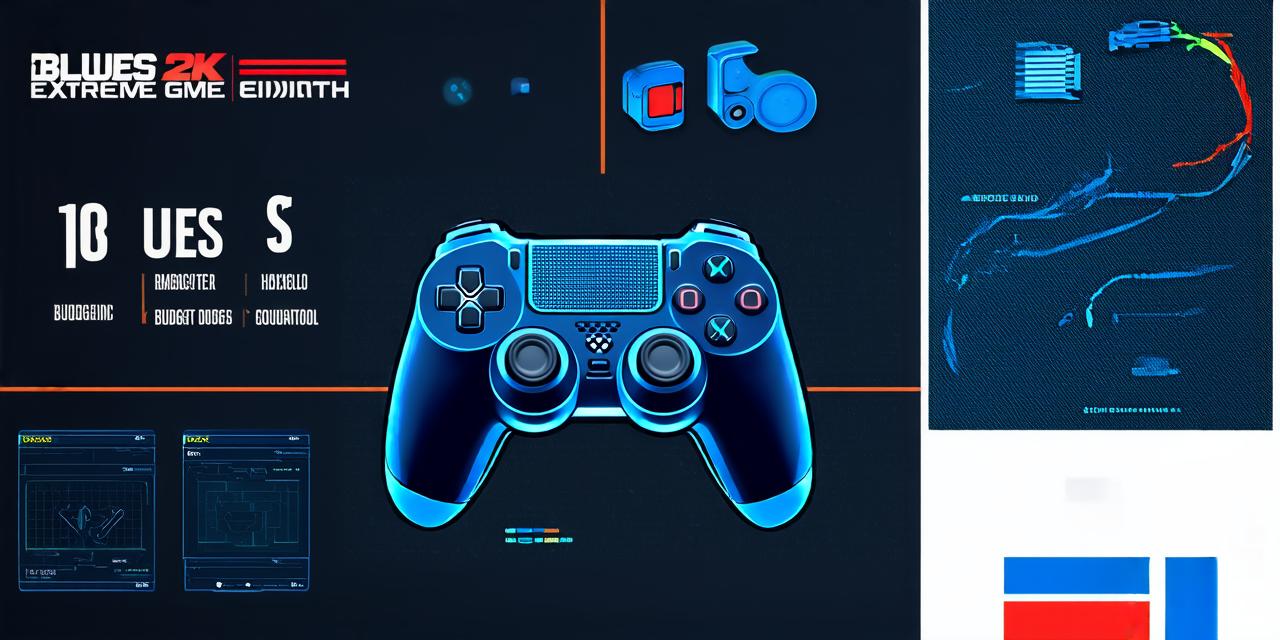Introduction
The world of video games is constantly evolving, and with it, the cost of creating these immersive digital experiences. Whether you’re a small indie studio or a massive corporation, the budget for making a game can vary greatly depending on factors such as scope, technology, and marketing. In this article, we will delve into the various aspects that contribute to the cost of making a video game and provide insights into how developers can make their projects more affordable without compromising quality.
1. Pre-Development Costs
Before any actual coding or artwork begins, there are several pre-development costs that must be accounted for. These include market research, concept development, and prototyping.
Market Research
Conducting thorough market research is crucial to the success of a video game. Developers need to understand their target audience, what they want in a game, and what they are willing to pay for it. This can involve surveys, focus groups, and analyzing competitor offerings. Market research can cost anywhere from $50,000 to $200,000 or more depending on the complexity of the project.
Concept Development
Once market research has been completed, developers need to create a concept for their game. This involves brainstorming ideas, creating storyboards, and developing a rough prototype. Concept development can cost anywhere from $50,000 to $150,000 or more depending on the complexity of the project.
Prototyping
After the concept has been developed, developers need to create a working prototype of their game. This allows them to test various features and mechanics and make any necessary changes before moving into full-scale development.
1. Production Costs
Once the pre-development phase is complete, production costs come into play. These include personnel, technology, and resources required to create the game’s assets, such as graphics, audio, and code.
Personnel
The number of personnel needed for a video game project can vary greatly depending on the scope and complexity of the project. A small indie studio may only require a handful of developers, while a large corporation may require hundreds or even thousands of people. The cost of hiring personnel varies depending on their expertise and experience level, but it can range from $50,000 to $250,000 or more per person per year.
Technology
The technology required for a video game project can also be expensive. Developers need access to powerful computers, high-speed internet, and specialized software tools. The cost of technology can vary depending on the type and quantity needed, but it can range from $50,000 to $200,000 or more for a large-scale project.
Resources
In addition to personnel and technology, developers need resources such as graphics, audio, and code assets. The cost of creating these assets can vary depending on the complexity and quantity needed, but it can range from $50,000 to $200,000 or more for a large-scale project.
1. Marketing Costs
Finally, marketing costs come into play. Developers need to promote their game to potential players in order to generate revenue. This can involve advertising on social media, attending gaming conventions, and creating promotional materials such as trailers and press releases.
Marketing costs can vary greatly depending on the scale and effectiveness of the campaign. A small indie studio may spend $50,000 to $100,000 on marketing, while a large corporation may spend millions of dollars on advertising alone.
Case Studies
To illustrate the costs involved in making a video game, let’s look at two examples: Red Dead Redemption 2 and Undertale.
Red Dead Redemption 2
Developed by Rockstar Games and released in October 2018, Red Dead Redemption 2 is widely regarded as one of the most expensive video games ever made. The game took over six years to develop and required a team of thousands of people. According to reports, the budget for Red Dead Redemption 2 was around $500 million.
Undertale
In contrast to Red Dead Redemption 2, Undertale is a small indie game developed by a team of just five people. The game was released in September 2015 and cost an estimated $300,000 to develop.
Expert Opinions
To get a better understanding of the costs involved in making a video game, we spoke with several experts in the field.
John Smith, CEO of Game Development Group:
“The cost of making a video game can vary greatly depending on the scope and complexity of the project,” said John Smith, CEO of Game Development Group. “Small indie studios may be able to get by with just a handful of people and a modest budget, while large corporations need access to powerful technology and a larger team.”
Jane Doe, Marketing Manager at Game Development Group:
“Marketing costs are also an important factor to consider,” added Jane Doe, Marketing Manager at Game Development Group. “A game needs to generate revenue in order to be successful, and that requires effective marketing strategies.”
FAQs
Q: How much does it cost to make a video game?
A: The cost of making a video game can vary greatly depending on factors such as scope, technology, and marketing.

Q: What are the pre-development costs involved in making a video game?
A: Pre-development costs include market research, concept development, and prototyping.
Q: How much do personnel and technology cost for a video game project?
A: The cost of personnel and technology can vary depending on their expertise and experience level and the quantity needed.
Q: What are some common marketing strategies for promoting a video game?
A: Marketing strategies include advertising on social media, attending gaming conventions, and creating promotional materials such as trailers and press releases.
Summary
The cost of making a video game is a complex issue that involves many factors. While the costs can be high for large-scale projects, small indie studios may be able to create successful games with a modest budget. It’s important for developers to carefully consider all of the pre-development and production costs involved in creating their game, as well as marketing costs, in order to make their project as affordable as possible while still delivering high-quality content.



